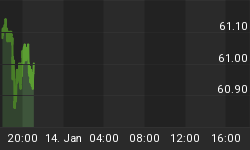QE3 Summary
The Federal Reserve has just announced that it would launch the so-called "QE3", or "Quantitative Easing Three" program. Key components are:
-
The creation of $40 billion a month out of thin air to purchase agency mortgage-backed securities at artificially low interest rates;
-
The continuation of Twist 2, and the shifting of Federal Reserve holdings of US Treasury Bonds into longer-term bonds;
-
Combined purchases of long-term securities between QE3 & Twist 2 of approximately $85 billion per month through the end of the year;
-
Quantitative easing without any pre-defined limit, meaning an open-ended commitment to keep purchasing securities at whatever level is judged necessary until the labor market improves "substantially";
-
The potential purchase of additional assets and the deployment of other policy tools as needed;
-
An extension of the 0.0% to 0.25% target range for the Fed Funds rate until at least mid 2015.
Link to full text of Federal Reserve statement.
Analysis: No Sterilization Means Radically Increased Inflationary Danger
The most important part of the Fed statement was the word that wasn't mentioned: "sterilization". This means that there was no promise to "contain" the newly created money, as was the case with QE1 and previous mortgage security purchases, but instead it appears that the newly created money will be going directly into the economy - and on a potentially unlimited basis.
The promise to create money out of thin air and inject it into the economy at a rate of $40 billion a month on an unlimited basis is the single most inflationary act the Federal Reserve has taken to date. While the dollar volume on a monthly basis is somewhat less than prior "easings" (aka monetary creations), the non-sterilized and potentially multiyear nature of QE3 takes it to an entirely different level than QE1, QE2 or either of the Twists.
For a background reading on how sterilization works and why central banks usually sterilize, there are several articles in my "Money Creation Primer", linked below:
http://danielamerman.com/resources/SumMoney.html
Analysis: An Attack On Unemployment Through An Attack On The Dollar
The Federal Reserve is indeed using QE3 to attack the problem of unemployment - but not through the method stated.
The cover story is that QE3 will be used to increase the money available for lending and to lower interest rates. It is a credit to Mr. Bernanke that he was able to read this statement with a straight face, for the assertion that the economy is being held down by too high of interest rates and tight money is ludicrous. Interest rates are already at historic lows, and banks are awash in available cash. Moreover, QE3 is likely to have very little effect when it comes to expanding corporate lending, just as QE2 had very little effect - because that was never the intended route to rebooting employment in the United States.
As described in detail in my article "Bullets In The Back: How Boomers & Retirees Will Become Bailout, Stimulus & Currency War Casualties" (linked below) the United States has a structural problem with unemployment that is essentially unsolvable so long as the dollar remains high in value relative to other global currencies. This problem was exacerbated by the rise in the US dollar caused by the Euro crisis - and it is no coincidence that the unemployment crisis in the United States is now getting rapidly worse even as the dollar soared this past spring and summer.
http://danielamerman.com/articles/Bullets.htm
The Federal Reserve is, of course, well aware that the unemployment situation is far, far worse than what is being captured in the official headline unemployment rate of 8.1%. The government knows full well that the true unemployment rate, once workforce participation rate manipulations are netted out, is closer to 19% - and getting worse, as explored in detail in my article linked below, "Making 9 Million Jobless "Vanish": How The Government Manipulates Unemployment Statistics".
http://danielamerman.com/articles/2012/WorkC.html
This building crisis of a strengthening dollar and rising unemployment called for emergency action, and that is exactly what Bernanke is doing. He is effectively calling in a B-52 strike on the US dollar, monetizing for the world to see, and pledging to monetize for as long as it takes - until the US dollar is driven down to a level where American workers can once again be globally competitive.
If the rest of the world sits back and lets the United States drive down the value of the dollar, then US employment is indeed likely to rise - at the cost of falling employment elsewhere. But if the rest of the world is not willing to sit back and watch jobs flow to the US, then there is likelihood of counterstrikes, and even the danger of all-out currency warfare.
Analysis: Increased Financial Repression, Increased Hidden Taxes & A Devastating Blow To Retirement Investors
Consider two promises the Federal Reserve just made:
-
That it will create money out of thin air on a massive scale for as long as it takes until substantial improvements in the labor market occur; and
-
That near zero short term interest rates will continue until at least mid-2015, even as interventions in the long term bond market will also hold long term interest rates down.
In other words, inflation goes up (whether officially captured in inflation statistics or not), and interest rates are forced even lower, for a longer period of time. There is a term economists use for this process: "Financial Repression".
















